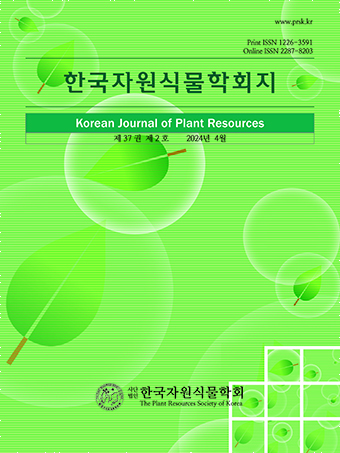Research Article
Abstract
References
Information
Majure, L.C., D.E. Soltis, P.S. Soltis, and W.S. Judd. 2012b. Cytogeography of the Humafusa Clade of Opuntia s.s. (CACTACEAE: Opuntioideae): Correlations with georraphic distributions and morphological differentiation of a polyploid complex. Comparative Cytogenetics 6:53-77.
10.3897/compcytogen.v6i1.252324260652PMC3833768
White, T.J., T. Bruns, S. Lee and J.W. Taylor. 1990. Amplification and direct sequencing of fungal ribosomal RNA genes for phylogenetics: In M.A. Innis, D.H. Gelfand, J.J. Sninsky and T.J. White (eds.), PCR Protocols: A guide to methods and applications, Academic Press, San Diego, California (USA). pp. 315-322.
10.1016/B978-0-12-372180-8.50042-11696192
- Publisher :The Plant Resources Society of Korea
- Publisher(Ko) :한국자원식물학회
- Journal Title :Korean Journal of Plant Resources
- Journal Title(Ko) :한국자원식물학회지
- Volume : 34
- No :5
- Pages :451-461
- Received Date : 2021-08-03
- Revised Date : 2021-09-18
- Accepted Date : 2021-09-23
- DOI :https://doi.org/10.7732/kjpr.2021.34.5.451




 Korean Journal of Plant Resources
Korean Journal of Plant Resources







